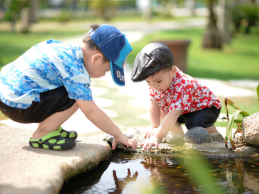
As researchers emphasize that the safest activities are all outdoors, many families have begun exploring local hiking trails more than ever this summer. Lots of hiking trails circle around reservoirs, which provide both natural beauty and our community’s drinking water. Teaching your kids how a pond with plants and muddy water becomes drinking water can also help them understand the importance of keeping these water sources healthy and clean.
After you’ve gone for a hike, you can do this simple water filtration experiment at home to learn a little about how reservoir water becomes drinking water.
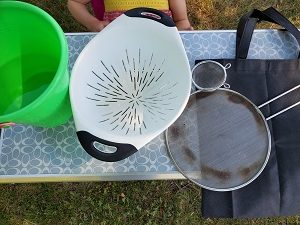
For this experiment, you’ll need a couple of buckets or receptacles and a few items that can strain water. Here we used a colander, cooking strainers with various levels of filtration, and a fabric shopping bag. You may have different tools, but look for things that let water and different sizes of sediment pass through.
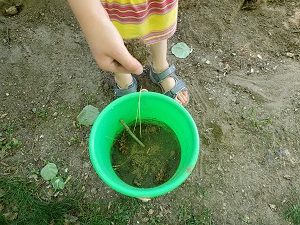
Fill your bucket with water, then use whatever natural elements you find to make it nice and dirty. Make sure you include debris of various sizes, like dirt, grass, pine cones, leaves, and rocks. Think of the kinds of natural elements you saw in the reservoir when you were hiking.
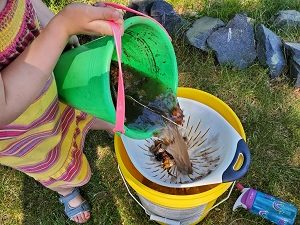
Now begin to filter the water! Start with whatever tool will let the most debris through and explore what was removed from the water and what still remains.
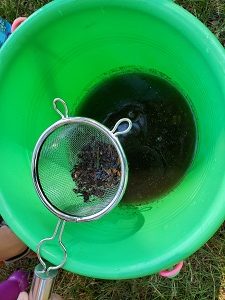
Pour the water through each of your “filters” as you progressively remove smaller and smaller particles of debris. Keep the debris in the filters to explore later.
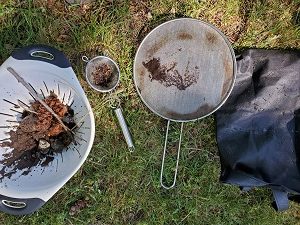
Once you’ve used all your filters, think back to how dirty your water was when you began. While we’re not using sophisticated enough filters to make this water clean enough to drink, it’s much cleaner than it was before! You just created your own version of a water treatment plant – but don’t worry, the ones that clean our drinking water use much better filters.
If you’re interested in learning more about water filtration and conservation, check out some of the titles below.
Skip to End of Carousel